The engineering gap
- Published

Dawn Bonfield found this kind of early enthusiasm had disappeared by the age of eight or nine
When Dawn Bonfield, the former chief executive of the Women's Engineering Society, ran a stand recently at a big military airshow, she was in for a shock.
There were around 900 Brownies amongst the crowd and Ms Bonfield recounts, "I'm saying to all these girls, 'Do you know about engineering, would you like to be an engineer, have you thought about engineering?'
"And in the whole day... probably five or six of them said yes. Every other one said no, just straight out no."
What surprised her most, she says, is that it wasn't that these eight and nine-year-old girls didn't know what engineering was. Simply that they had already switched off.
"So how much work does it take to change that?" asks Ms Bonfield. "I mean it's huge."
Numbers game
There's no shortage of data to back up her estimation of the scale of work required. The latest figures, external from the Office for National Statistics show that women make up around just 8% of engineers in the UK.
And this is at a time when the UK needs to produce thousands more engineers, so much so that the inventor, Sir James Dyson, is planning to open his own institute to address the skills shortage.
Further back in the chain that links school, university and then employment, other data, external show that 49% of state schools send no girls to study A-level physics. And of those students who are taking an A-level in the subject, only a fifth are girls - despite getting similar grades at GCSE as boys.

Future problem solvers? Past and present engineering students at the John Warner School. Jamie (front, centre) is now an engineering apprentice
At the John Warner School in Hertfordshire, where you can take a GCSE in engineering, Dawn Bonfield's discoveries would come as no surprise to the girls in the GCSE and A-level groups. They are well aware of the stigma surrounding women and engineering. It seems even in the 21st Century it is still thought of as a job for a man.
"It starts at a young age... and that's just what we've grown up with," says Sophie, who did an engineering GCSE, but isn't continuing it to A-level, because of a timetable clash.
She puts it down partly to the fact that "girls are just put in the corner with a doll" - while boys play with trucks and cars - and partly down to the idea that manual labour is the preserve of men.
"It's only when you get to GCSE age that that option's offered to you, so a lot of people might still at that age be thinking, 'Oh well, I shouldn't be doing building or coding,' and stuff like that."
The girls at the John Warner School seem to defy some of these perceptions - 11 out of 13 of them said they would consider a career as an engineer. Nevertheless all of them are vastly outnumbered by boys in their different GCSE and A-level classes in engineering. And they're in the minority in physics and maths classes too.
Mum and dad matter
Sexual stereotyping and not enough female role models are well documented as reasons why girls don't choose engineering. As are misconceptions about the job itself, which isn't always about getting your hands dirty.
Campaigns such as the Institution of Engineering and Technology's "#9PercentIsNotEnough" are trying to address this.

Hannah's mother was dubious at first but then backed her daughter's enthusiasm for engineering
In addition, in one of the many recent reports, external concerned with the dearth of girls pursuing science, technology and engineering (Stem) subjects, the attitude of parents was also cited as an important factor in career choices. For girls, perhaps unsurprisingly, mothers were particularly influential.
"My mum was a bit iffy about it at first cos she was more like, 'Girls should do this and that and the other,' more like 'keep your posture up and be ladylike'," says GCSE student Hannah.
"But my dad used to build a lot of stuff and he got me into that. So after my mum saw how me and my dad interacted she said, 'Yeah, go for it' and she's kind of the one who supported me with this."
Educating parents, as well as the girls themselves and their teachers, is key believes Helen Macadam, a civil engineer who works on railway projects for the construction company Skanska.
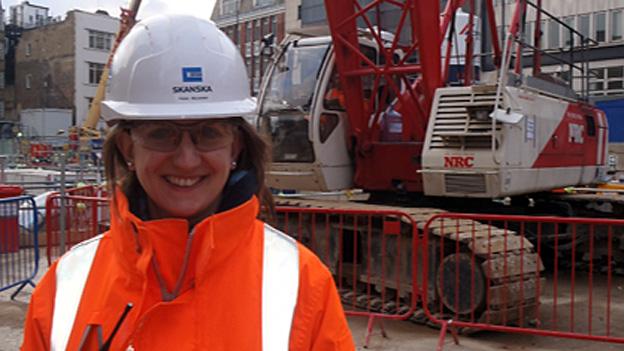
Helen Macadam has a novel solution to the engineering problem
"For me it's all about being more open and being more transparent and showing people, because what is [an] engineer? It covers so many different jobs, you can't even begin to describe it. And that's probably why it's so difficult to promote it," she says. "It's almost whatever job you want."
'No silver bullet'
The UK has a particularly low percentage of female engineers, other European countries put the figure at around 20%. In the US it's 14%, according to a recent congressional estimate, but the same question preoccupies the profession on the other side of the Atlantic too.
"There's no silver bullet," says Lina Nilsson, a biomedical engineer who works for a medical equipment company. She, however, believes she might have found one answer. When she was the innovation director in the Blum Center for developing economies at the University of California, Berkeley, the department started offering a postgraduate course on solutions for low-income communities.
Half the students who enrolled in the first classes in the autumn of 2014 were women.
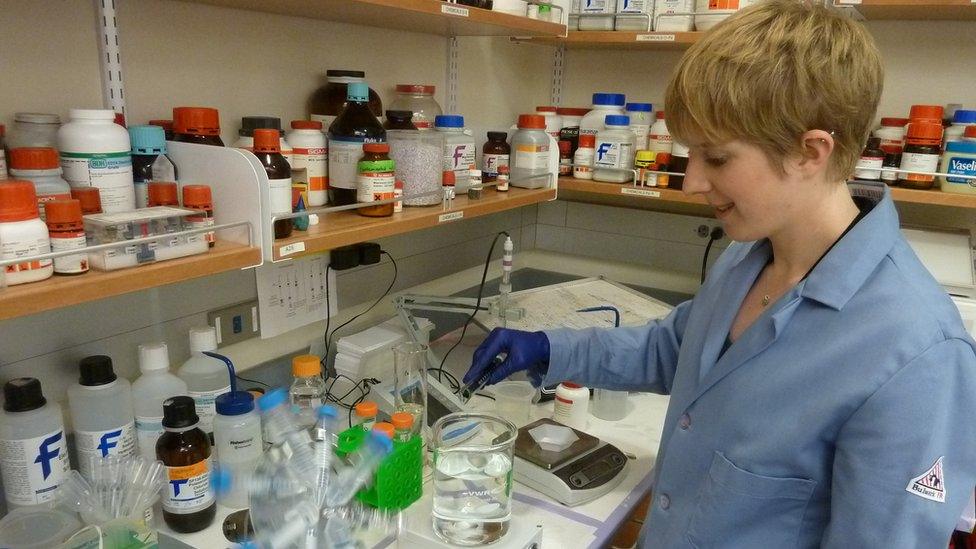
Bio-medical engineer Lina Nilsson thinks that if engineering has an obvious social purpose it becomes a more attractive career for women
Ms Nilsson thinks it was the obvious, practical good that designing an affordable solution for clean drinking water, or medical diagnostic equipment for tropical diseases, would do, that drew women to the course.
"The rationale of why to do it, not how, is really powerful," she says. "It's engineering with a social impact. On traditional courses it becomes hidden, or assumed that young students know what the purpose of engineering is. In fact we only have a vague idea of what it is."
The UK is following suit. Several universities and colleges are finding new ways of teaching engineering that are aimed at pulling in a more diverse group of students.
Some courses are experimenting with dropping physics and maths A-level as a prerequisite for engineering. Others are offering courses, such as humanitarian engineering, which are popular with women.
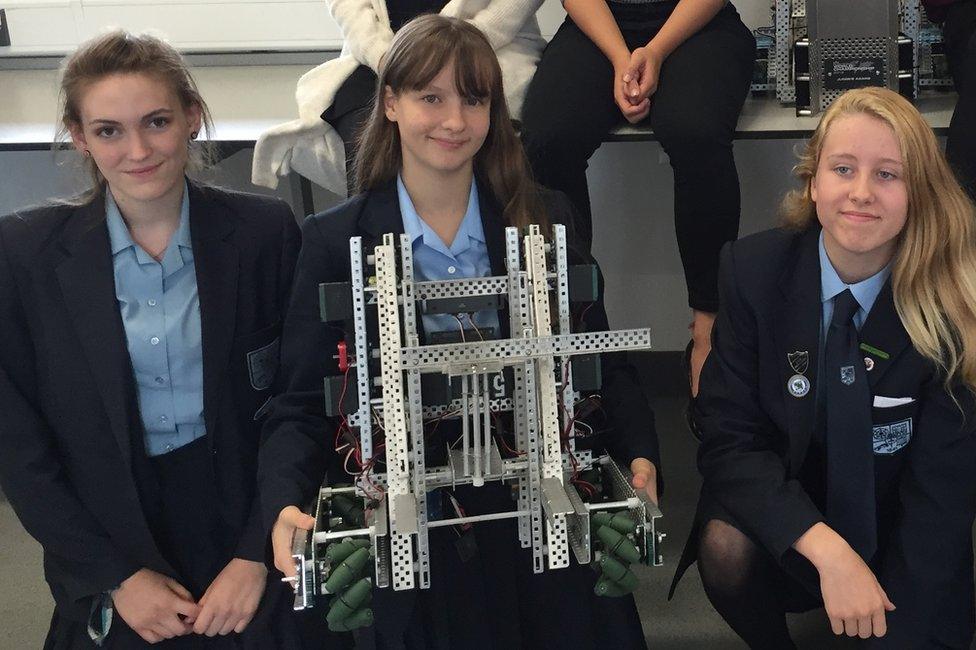
John Warner GCSE students Lizzie, Clare and Kaitlyn with the robot they created in the school's robotics club
But Helen Macadam has another solution to the engineering problem. "Maybe, if we didn't call it engineering, if we didn't say, 'Do you want to be an engineer?'" she suggests.
"If you just completely rebranded it and said, 'How would you feel about a career being a problem solver?' That immediately just sounds like something that you can apply to anything, that you could do in whatever context interests you."
The A-level students at the John Warner School would probably agree with her. They are aware that women are not stereotypically seen as problem solvers, but that's not their view.
"Women are good at fixing problems," Alice, Georgia and Cerys tell me. "Men are expected to do it and praised when they do do it, but women kind of do it naturally and it doesn't get really noticed."
- Published4 November 2016
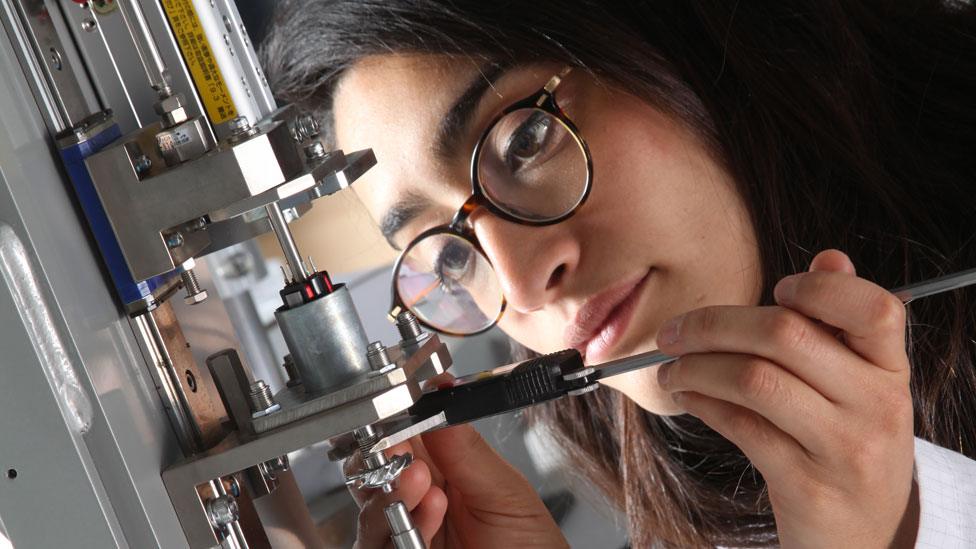
- Published1 November 2016
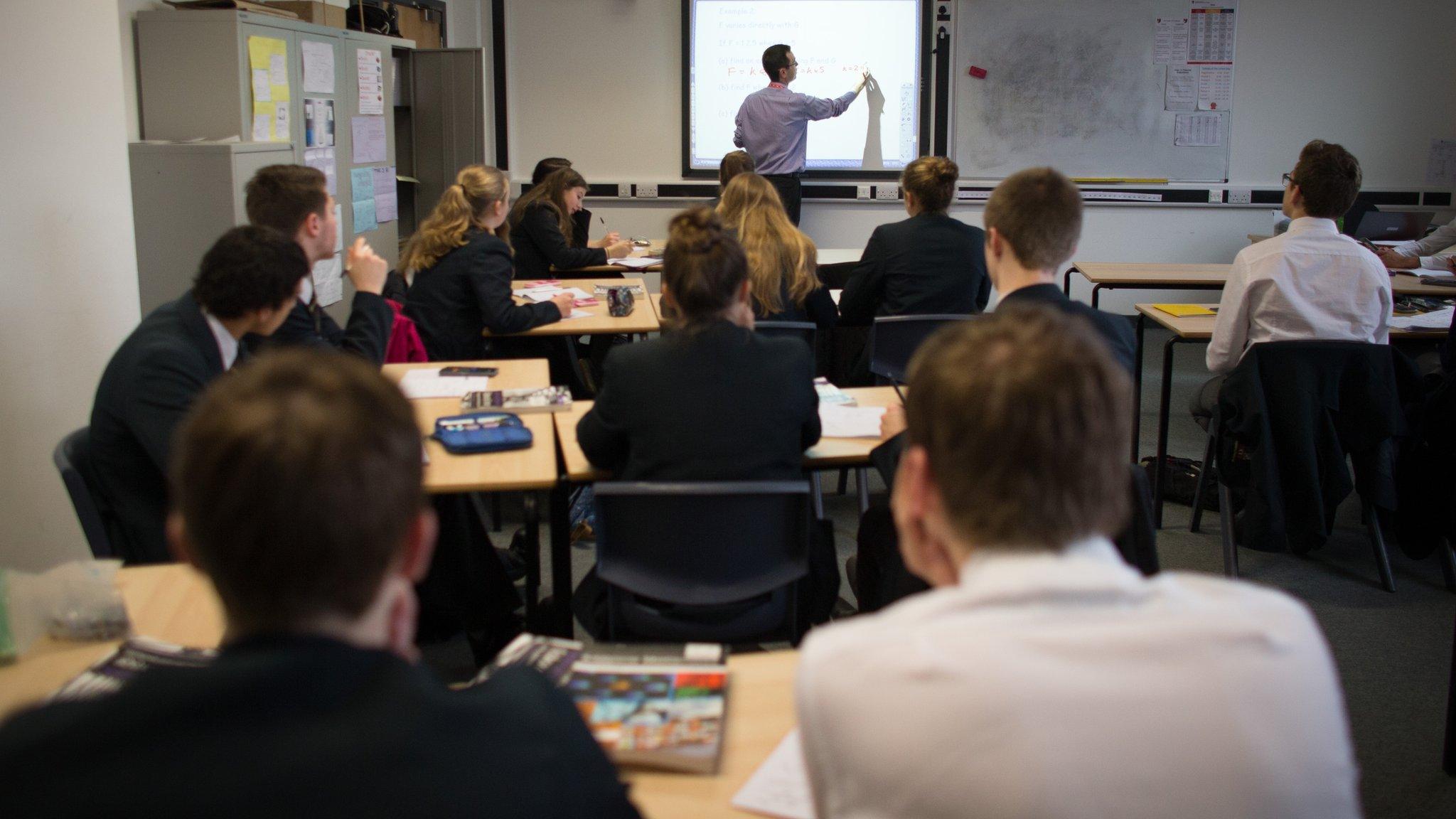
- Published3 February 2015

- Published12 January 2015

- Published13 October 2015
